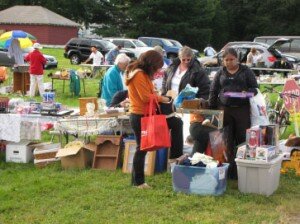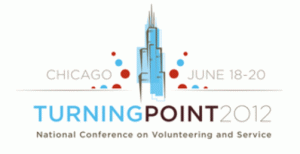 This past week has been a difficult one for Colorado residents. Large wildfires and high temperatures have destroyed thousands of homes, forcing residents to evacuate their communities to find safe shelter. Although many people and organizations are helping the relief efforts, they still need more help!
This past week has been a difficult one for Colorado residents. Large wildfires and high temperatures have destroyed thousands of homes, forcing residents to evacuate their communities to find safe shelter. Although many people and organizations are helping the relief efforts, they still need more help!
How can you get involved in helping Colorado and the rest of the Rocky Mountain region during this hard time? Volunteer your time and efforts to helping neighbors!
- Have some spare change? Any monetary amount will be greatly appreciated by the volunteer organizations that are currently assisting emergency efforts. Financial donations allow organizations to purchase exactly what they need to ensure proper assistance. No organization is preferred over another; choose one that you are particularly drawn to.
- Donate your time to a volunteer organization: Organizations such as the Red Cross, the Humane Society, and the Salvation Army are already stationed in the Colorado Springs area. Do not come unexpectedly to these areas for safety reasons. Sign up to help efforts when volunteers are needed.
-
Material donations are a great way to help! The surrounding county volunteer organizations are asking for very specific donations at
 this time. The list includes:
this time. The list includes:
-
- Meal donations from restaurants
- Donations from rental properties for displaced individuals
- New batteries
- New underwear and socks
- Furniture
- Water bottles
- Chain saws
- New pots and pans
- Generators
- Work boots
More ideas for donation needs can be found here.
- Hold a yard sale or charitable event: Either event is a great way to get your local community involved in relief efforts. Get your neighbors together for a yard sale to help raise money for the victims and Colorado. A charitable event is a fun way to raid awareness for the disaster, while getting much needed donations for voluntary efforts.
- Hold a blood drive: It’s easy! Contact the Red Cross about holding a blood drive at your workplace, school, church, or other community center. Donating blood is a great way to give the much needed gift of life to your neighbors!
 Colorado needs our help at this time. Come together with your community and help support them in their efforts.
Colorado needs our help at this time. Come together with your community and help support them in their efforts.
Do you want to learn more about The High Park Fire? Check out Help Colorado Now for up-to-date volunteer information and residential needs. Our Colorado Action Center, United Way of Larimer County is a great resource for interested volunteers, as well.

 There is nothing like summer vacation as a teenager! With summer comes endless possibilities. It can be a chance to laze around and catch up on all of that terrible TV you missed during the school year, or it can be a learning and growing experience in your own community. Leave the couch behind and spend time volunteering this summer. Volunteering can help you learn new skills, understand more about your professional interests, and give you something to put on your resume for college applications and future paid positions!
There is nothing like summer vacation as a teenager! With summer comes endless possibilities. It can be a chance to laze around and catch up on all of that terrible TV you missed during the school year, or it can be a learning and growing experience in your own community. Leave the couch behind and spend time volunteering this summer. Volunteering can help you learn new skills, understand more about your professional interests, and give you something to put on your resume for college applications and future paid positions! Libraries If you’re a big reader or just looking for a cool place to escape the summer sun, volunteering at your local library might be right for you. Library volunteers work in a variety of positions including the computer center, re-shelving books, and aiding with the children’s programs. Ask to speak to someone in volunteer services at your local library.
Libraries If you’re a big reader or just looking for a cool place to escape the summer sun, volunteering at your local library might be right for you. Library volunteers work in a variety of positions including the computer center, re-shelving books, and aiding with the children’s programs. Ask to speak to someone in volunteer services at your local library. Yikes! It’s hot outside. We are expecting record high temperatures this summer. Who wants to go outside into the heat and humidity when there is an air conditioner on the inside?
Yikes! It’s hot outside. We are expecting record high temperatures this summer. Who wants to go outside into the heat and humidity when there is an air conditioner on the inside? These are both great ways to volunteer without leaving the air conditioner because you not only get some cleaning done, but you can also largely help your community.
These are both great ways to volunteer without leaving the air conditioner because you not only get some cleaning done, but you can also largely help your community.

 So this June is Pride month, when we celebrate the accomplishments of the LGBT community. I’m someone who works alongside nonprofit professionals. I’m also someone who benefits from the economic empowerment and healthcare services that local nonprofits provide. The fact that I’m a transgender person of color puts me in a demographic more likely to
So this June is Pride month, when we celebrate the accomplishments of the LGBT community. I’m someone who works alongside nonprofit professionals. I’m also someone who benefits from the economic empowerment and healthcare services that local nonprofits provide. The fact that I’m a transgender person of color puts me in a demographic more likely to  items, just to see if I can catch a deal! In addition to finding great deals, book donations allow for low-income families to secure summer reading! Thanks to the YMCA, the Boys and Girls Club, and the Salvation Army, and several other organizations, you can donate your books or schedule your books to be picked up.
items, just to see if I can catch a deal! In addition to finding great deals, book donations allow for low-income families to secure summer reading! Thanks to the YMCA, the Boys and Girls Club, and the Salvation Army, and several other organizations, you can donate your books or schedule your books to be picked up. books such as encyclopedias and dictionaries; 1996 or newer publish date medical, nursing, IT, and law books. Books for Africa also accepts school/office supplies including, paper, pencils, pens, wall charts, maps, etc.
books such as encyclopedias and dictionaries; 1996 or newer publish date medical, nursing, IT, and law books. Books for Africa also accepts school/office supplies including, paper, pencils, pens, wall charts, maps, etc.
 September 30th Washington, DC and reconvenes in San Francisco and Los Angeles in November. Besides enjoying free access to the festivals, volunteers will have the chance to meet new people, have fun and support a great cause! Volunteers are a critical part of the Green Festival! The event would not be possible without them. As a member of our amazing volunteer team at Green Festival, you are an essential part of the nation’s leading sustainability event educating and activating people to make choices for a just and sustainable world!
September 30th Washington, DC and reconvenes in San Francisco and Los Angeles in November. Besides enjoying free access to the festivals, volunteers will have the chance to meet new people, have fun and support a great cause! Volunteers are a critical part of the Green Festival! The event would not be possible without them. As a member of our amazing volunteer team at Green Festival, you are an essential part of the nation’s leading sustainability event educating and activating people to make choices for a just and sustainable world! HandsOn Network is engaged in a focused field investment strategy called Innovation Hubs (iHubs), designed to dramatically accelerate the growth, effectiveness and impact of our network. Through iHubs we are engaging a cohort of our strongest, most progressive market leaders to formulate innovative approaches and pilot best-in-class initiatives with the intent of scaling the most impactful opportunities to benefit the entire network, and ultimately, the communities we serve.
HandsOn Network is engaged in a focused field investment strategy called Innovation Hubs (iHubs), designed to dramatically accelerate the growth, effectiveness and impact of our network. Through iHubs we are engaging a cohort of our strongest, most progressive market leaders to formulate innovative approaches and pilot best-in-class initiatives with the intent of scaling the most impactful opportunities to benefit the entire network, and ultimately, the communities we serve. more than 70,000 nonprofit partners and millions of volunteers.
more than 70,000 nonprofit partners and millions of volunteers.
 s between donors, volunteers and causes. Their innovative concept is to develop an integrated service model that brings together groups of investors and creates unified teams to seed, lead, staff and support projects from concept to evaluation.
s between donors, volunteers and causes. Their innovative concept is to develop an integrated service model that brings together groups of investors and creates unified teams to seed, lead, staff and support projects from concept to evaluation. One of the more provocative iHubs projects comes to us from
One of the more provocative iHubs projects comes to us from  Today marks the start of
Today marks the start of  that you are interested in. Make sure you know what organization will be there and who will be representing them. Make a schedule for yourself so that you do not miss anybody that you would like to meet.
that you are interested in. Make sure you know what organization will be there and who will be representing them. Make a schedule for yourself so that you do not miss anybody that you would like to meet.
 break out sessions, people are less likely to approach you because you are giving off the message that you are busy.
break out sessions, people are less likely to approach you because you are giving off the message that you are busy.

